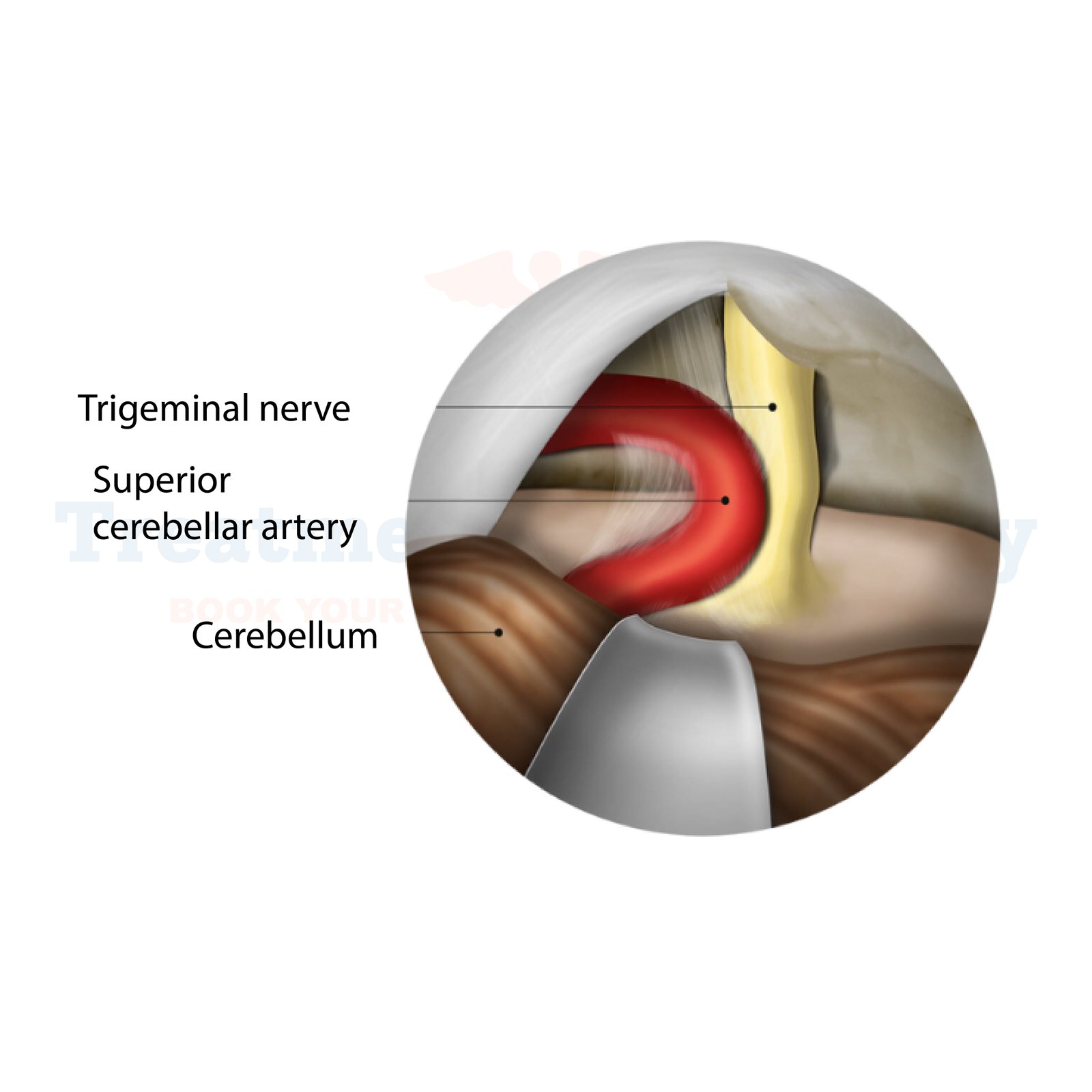Trigeminal Neuralgia Treatment in Germany
Trigeminal neuralgia is a chronic pain condition that affects the trigeminal nerve, one of the most critical nerves in the head, responsible for transmitting sensation from your face to your brain. This condition is characterized by sudden, severe, and stabbing facial pain, often triggered by everyday activities like eating, speaking, or even touching the face. The unpredictability and intensity of the pain can severely impact quality of life, making routine tasks feel nearly impossible.
For individuals living with trigeminal neuralgia, surgery can be a life-changing solution. Germany is renowned for its world-class medical facilities and expert surgeons specializing in trigeminal neuralgia treatment. By combining cutting-edge technology with personalized care, these surgeries provide patients with a chance to regain control of their lives, free from the debilitating burden of chronic pain.
What Causes Trigeminal Neuralgia?
For some individuals, the exact cause of trigeminal neuralgia cannot be determined, however common causes can be:
- Compression of the Trigeminal Nerve: This pressure damages the nerve's protective covering, leading to misfired pain signals.
- Aging: Natural aging may lead individuals to nerve compression or changes in the structure of the brain and blood vessels.
- Multiple Sclerosis (MS): A condition that causes the protective sheath around nerves to deteriorate, leading to pain.
- Tumors or Lesions: Occasionally, trigeminal neuralgia may be caused by tumors pressing on the trigeminal nerve.
- Facial Trauma or Surgical Injury: Trauma to the face or prior facial surgeries can damage or irritate the trigeminal nerve.
Symptoms of Trigeminal Neuralgia
- Facial Pain: Sudden, severe, stabbing or shock-like pain in the face, often around the jaw, cheek, or eye.
- Episodic Pain: Episodes of pain may last for a few seconds to several minutes.
- Sudden Triggers: Pain can be triggered by everyday activities, such as chewing, speaking, or touching the face.
- Increased sensitivity: Sensitivity to touch, temperature changes, or light pressure on the face.
Diagnosis and Diagnostic Tools
Accurate diagnosis is essential for developing an effective treatment plan and improving overall quality of life for individuals dealing with trigeminal neuralgia.
Common Diagnostic Methods
Neurological Examination: Testing facial reflexes and sensation to identify potential nerve involvement.
Imaging Tests
- MRI: Detecting possible compression of the trigeminal nerve by blood vessels or tumors.
- MRA: Visualizing blood vessel placement near the trigeminal nerve to determine compression.
- CT Scans: Providing detailed images of bone structures around the nerve pathway in special cases.
Treatment for Trigeminal Neuralgia in Germany
Germany is recognized for its advanced healthcare system and pioneering neurosurgical techniques. Patients traveling here gain access to innovative treatments, world-class facilities, and experienced specialists.
Medication and Drug Therapies
- Anticonvulsants: Medications like carbamazepine are commonly prescribed to reduce nerve pain
- Muscle Relaxants: Drugs such as baclofen may be used in conjunction with anticonvulsants to alleviate symptoms.
- Pain Relievers: Certain painkillers may be used for mild cases or as supplementary treatment.
- New Drugs: Germany’s research on more effective drugs introduces patients with the low side-effect medicines.
Physical Therapies:
To alleviate pain, reduce muscle tension, and improve overall quality of life for individuals with trigeminal neuralgia, physical therapy plays a vital role. Manual therapies and tissue-relaxation techniques can be used alongside medical treatments.
Surgical Treatments
Surgical treatments are preferred when the patients suffer from more intense pain, severe tremors and other methods fail to provide relief.
- Microvascular Decompression (MVD): A minimally invasive surgery that relieves nerve compression to provide long-term pain relief without nerve damage.
- Rhizotomy Procedures: These involve disrupting pain signals by selectively damaging nerve fibers to reduce pain intensity.
- Stereotactic Radiosurgery (Gamma Knife): A non-invasive option that uses radiation to target the trigeminal nerve and ease pain.
- Nerve Repair or Grafting: Restores damaged nerves by reconnecting or replacing them with grafted tissue.
- Neurostimulation Surgery: Implants devices to deliver electrical impulses, helping to manage chronic nerve pain.
Why Choose Germany for Trigeminal Neuralgia Surgery
Germany is a leader in neurology and neurosurgery, providing unmatched expertise and innovative care. Choose Germany to regain your quality of life and break free from chronic pain. Here’s why Germany is the ideal destination for trigeminal neuralgia surgery:
- Medical Specialists: Highly experienced medical staff including neurosurgeons trained in the latest techniques.
- Advanced Technology: Benefit from advanced imaging, diagnostics, and surgical tools.
- Comprehensive Care: Expect personalized care and attention while undergoing your procedure.
- Innovative Research: Continuous advancement to introduce new therapies and medications.
- Global Reputation: Germany ranks among the top countries for successful neurosurgical outcomes.
Prevention & Management Strategies
- Stress Management: Practicing relaxation techniques such as mindfulness, meditation, or yoga can help reduce stress, which may exacerbate symptoms.
- Regular Exercise: Engaging in moderate physical activity can improve overall well-being and potentially help with pain management.
- Optimal Nutrition: Maintaining a balanced diet rich in vitamins and minerals may support nerve health and decrease inflammation.
- Follow Prescriptions: Take medications as prescribed by your healthcare provider to manage symptoms effectively.
- Regular Appointments: Visit your healthcare provider periodically to monitor progress and make any required changes to your treatment plan.
Conclusion
Trigeminal neuralgia is a debilitating condition, but breakthroughs in medical treatment offer hope for lasting relief. Germany’s state-of-the-art medical facilities, skilled specialists, and innovative surgical options make it a top destination for trigeminal neuralgia care. By combining advanced techniques with patient-focused care, Germany provides the best opportunity to alleviate pain, address the condition’s root cause, and restore quality of life.
👉 Contact us for further information and receive a complimentary consultation

.webp)
.webp)
 (1).webp)
 (1).webp)

.webp)
.webp)
 (1).webp)
 (1).webp)
